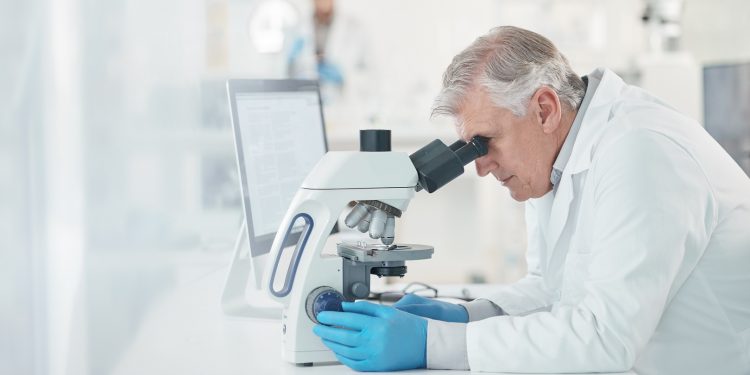What is Forensic Toxicology?
Forensic toxicology is a branch of forensic science that focuses on the analysis of drugs, chemicals, and other toxic substances in biological specimens, such as blood, urine, saliva, and hair. It involves the application of principles and techniques from analytical chemistry, pharmacology, and toxicology to determine the presence, identity, and quantity of toxic substances in biological specimens. The main objective of forensic toxicology is to determine whether a substance played a role in a person’s death, illness, or impairment and to provide evidence in legal proceedings.
Role of Forensic Toxicology in Legal Investigations
Forensic toxicology plays a crucial role in legal investigations by providing scientific evidence related to toxic substances in biological specimens. The findings from forensic toxicology analyses can be used to:
Determine the Cause of Death: Forensic toxicology is often used in cases of suspicious or unexplained deaths to determine whether drugs, poisons, or other toxic substances were involved. The analysis of post-mortem samples can help establish the cause and manner of death and provide evidence for criminal investigations.
Assess Impairment: Forensic toxicology is used to assess impairment in cases of driving under the influence (DUI) or operating heavy machinery. Blood or urine samples can be analyzed to determine the presence and concentration of drugs or alcohol in the system and provide evidence for legal proceedings.
Detect Drug-Related Crimes: Forensic toxicology is used to detect the presence of drugs in biological specimens, such as urine or blood, in cases of drug-related crimes. The analysis of samples can provide evidence of drug use, trafficking, or distribution.
Investigate Poisonings: Forensic toxicology can be used to investigate cases of intentional or unintentional poisonings. The analysis of biological specimens can help identify the toxic substance involved, the route of exposure, and the severity of poisoning.
History and Evolution of Forensic Toxicology
Forensic toxicology has a long and fascinating history that dates back to ancient times. Here is a brief overview of the evolution of forensic toxicology:
Middle Ages: In the Middle Ages, poisoning became a popular method of murder. The first recorded case of forensic toxicology was in 1215 when a woman was accused of poisoning her husband. A group of monks examined the husband’s stomach contents and found traces of poison, which led to the woman’s conviction.
19th Century: The development of analytical chemistry in the 19th century led to advances in forensic toxicology. Scientists were able to isolate and identify toxic substances in biological specimens using chemical tests. In 1851, the first toxicology laboratory was established in Germany.
20th Century: In the 20th century, forensic toxicology became a more established field of study. The use of gas chromatography and mass spectrometry in the 1960s and 1970s revolutionized the field, making it possible to detect and quantify even trace amounts of drugs and poisons in biological specimens. DNA analysis in the 1980s and 1990s also had a significant impact on forensic toxicology, allowing for more precise identification of biological samples.
21st Century: In recent years, forensic toxicology has continued to evolve with advancements in technology and changes in the legal landscape. There is an increasing focus on the analysis of new and emerging drugs, such as synthetic cannabinoids and designer drugs. The use of artificial intelligence and machine learning is also being explored to improve the efficiency and accuracy of toxicology analyses.
Toxic Substances commonly Detected in Forensic Toxicology
Alcohol: Ethanol, the primary psychoactive component of alcoholic beverages, is frequently detected in blood, breath, and urine samples in cases of DUI or other alcohol-related offenses.
Opioids: Opioids, such as heroin, morphine, and fentanyl, are highly addictive drugs that can cause respiratory depression and overdose. These drugs are commonly detected in post-mortem and urine samples.
Cocaine: Cocaine is a powerful stimulant drug that can cause cardiovascular and neurological effects. It is commonly detected in blood, urine, and hair samples.
Amphetamines: Amphetamines, such as methamphetamine and Adderall, are stimulant drugs that can cause cardiovascular and neurological effects. They are commonly detected in blood and urine samples.
Barbiturates: Barbiturates, such as Phenobarbital and Nembutal, are prescription drugs that can cause sedation and respiratory depression. They are commonly detected in blood and urine samples.
Carbon Monoxide: Carbon monoxide is a toxic gas that can cause poisoning and death. It is commonly detected in blood samples in cases of carbon monoxide poisoning.
Toxicology Techniques and Technologies
Immunoassay: Immunoassays are techniques that use antibodies to detect the presence of specific drugs or other substances in a biological sample. They are commonly used to screen for drugs of abuse in urine or blood samples.
Enzyme-Linked Immunosorbent Assay (ELISA): ELISA is a type of immunoassay that uses enzymes to detect the presence of specific antibodies or antigens in a biological sample. It is commonly used in forensic toxicology to screen for drugs of abuse and other toxic substances.
Collection, Preservation, and Storage of Forensic Samples
Collection: Samples should be collected as soon as possible after death or the alleged event. The collection should be performed using sterile, disposable equipment to prevent contamination. The type and quantity of sample collected will depend on the specific substance being tested for and the type of sample available (blood, urine, hair, etc.).
Preservation: Samples should be preserved to prevent degradation or alteration of the toxicological compounds. The choice of preservative depends on the type of sample being collected. For example, blood samples can be preserved with sodium fluoride or potassium oxalate to prevent glycolysis, while urine samples can be preserved with a mixture of sodium or potassium salts and boric acid to prevent bacterial growth.
Storage: Samples should be stored at the appropriate temperature and in the appropriate container to prevent degradation or alteration of the toxicological compounds. Blood samples should be stored in a refrigerated or frozen state, while urine and hair samples can be stored at room temperature. All samples should be labeled with the patient’s name, the date and time of collection, the type of sample, and any relevant clinical information.
Chain of Custody: A chain of custody should be maintained throughout the collection, preservation, and storage process to ensure that the samples are properly handled and to prevent tampering or contamination. This involves documenting the collection and handling of the samples, including the names and signatures of all individuals who have had contact with the samples.
Interpretation of Forensic Toxicology Results
Interpretation of forensic toxicology results is a critical aspect of forensic toxicology. The interpretation process involves comparing the results of the toxicology analysis with known therapeutic or toxic concentrations of the drug or substance in question. Here are some key steps in the interpretation of forensic toxicology results:
Identify the Drugs/Substances Detected: The first step in the interpretation process is to identify the drugs or substances detected in the sample. This involves comparing the toxicology results to a library of known drug and substance profiles.
Determine the Concentration of the Drugs/Substances: The next step is to determine the concentration of the drugs or substances detected. This is typically reported as the amount of the drug or substance per unit of sample (e.g., ng/mL, μg/g).
Consider other Factors: Interpretation of the toxicology results also involves considering other factors such as the time of drug administration, the route of administration, the patient’s medical history, and other medications the patient was taking.
Report the Findings: The final step is to report the findings of the toxicology analysis in a clear and concise manner. The report should include the drugs or substances detected, the concentrations, and any relevant clinical information.
Conclusion
Forensic toxicology is an important field that plays a critical role in legal investigations, medical research, and public health. It involves the analysis of biological samples to detect the presence of drugs or other toxic substances, and the interpretation of the results to determine the potential impact on human health. Forensic toxicology has a rich history and has evolved significantly over the years with the development of new technologies and analytical techniques.
References









Discussion about this post